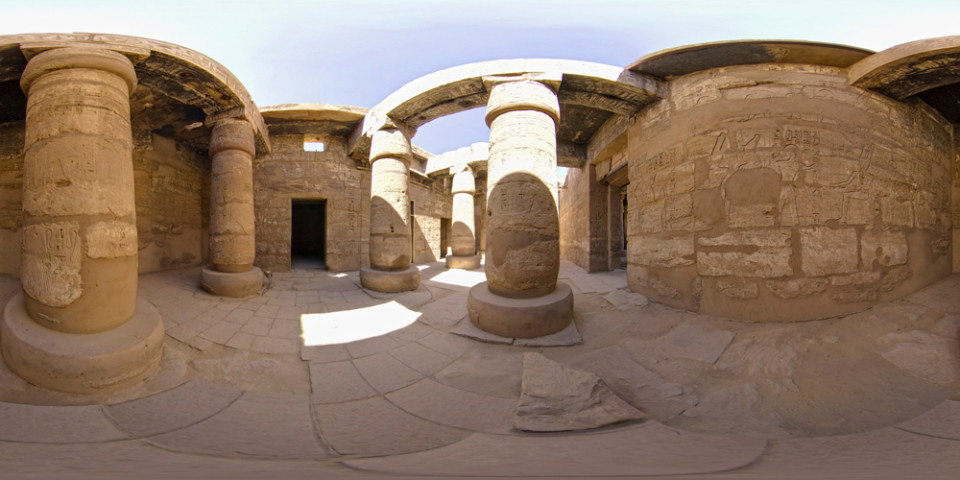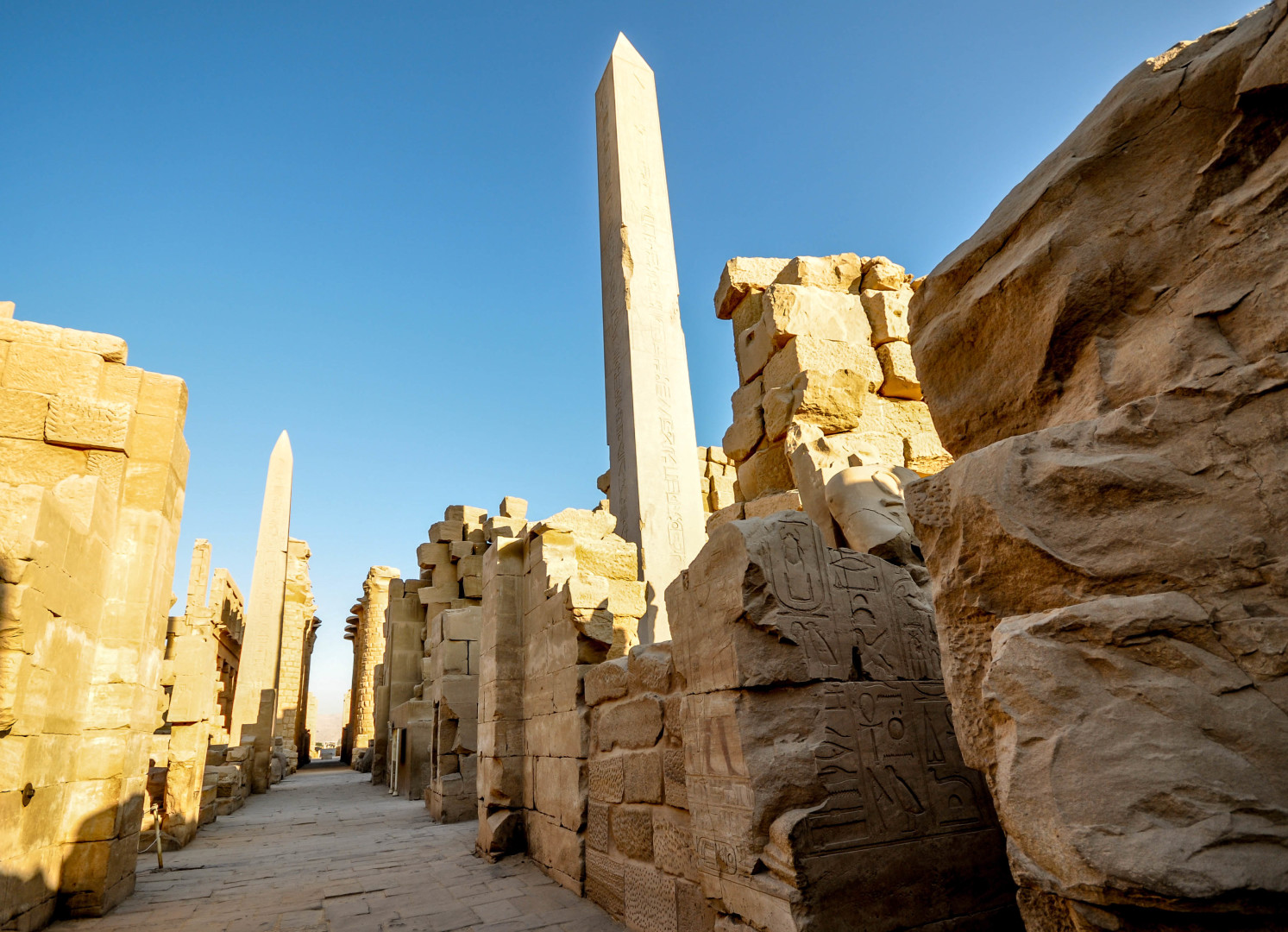Every year, thousands of tourists flock to Egypt to visit its legendary historical sites, and one of the most popular is the Karnak Temple in Luxor.

Tourists take photographs in front of the Karnak temple complex, Luxor, Egypt. (AP Photo/Hassan Ammar)
The city was built on the ruins of the ancient Egyptian city of Thebes, also known as the City of a Hundred Gates, and served as the capital of Egypt from 1991 BC.
Luxor is divided into the East Bank and the West Bank by the Nile River. Karnak lies on the east, while the West Bank has the Valley of the Kings, Valley of the Queens, the Deir Ail-Medina (The Worker’s Village), and the Temple of Medinat Habu, among with many other historical monuments.

A map of the sites on the West and East banks of the River Nile. (Source: en.egypt.travel)
The Karnak temple complex spans about 200 acres and is has been a popular pilgrimage site for nearly 2,000 years. The temple took more than 1,000 years to build, beginning in the 16th Century B.C. Historians believe that about 30 different pharaohs contributed to the building process of the site, making it one of the largest religious preservations projects in the world.

The Karnak temple complex, Luxor, Egypt. (AP Photo/Hassan Ammar)
The temple includes 25 temples and chapels. There are four main temples, and the Precinct of Amun-Re is the largest. The temple was dedicated to Pharaoh Amun and was the center of worship for Amun, his wife Mut and their son, Khons.
![The Great Lake at the Temple of Karnak in Luxor, Egypt. On the south side, at right, are the remains of a storage building where daily offerings were prepared.[Timsdad/Wikimedia Commons]](https://america.cgtn.com/wp-content/uploads/2015/06/Great_Lake_at_Karnak_Temple-e1433961960727.jpg)
The Great Lake at the Temple of Karnak in Luxor, Egypt. On the south side, at right, are the remains of a storage building where daily offerings were prepared. (Timsdad/Wikimedia Commons)
The Hypostyle Hall covers an area of 5.9 square meters (2.3 square miles) and features 134 columns. It’s believed to be the largest room of any religious building in the world. The highest pillar is 21.3 meters tall (70 feet), and each pillar is about 13.7 meters (45 feet) in circumference.

Spherical panorama image of the Hipostyle Hall at the Temple of Karnak Luxor, Egypt. (Focusredsea/Wikimedia Commons)
The Obelisk of Thutmose I, stands at 21.6 meters (70 feet) and the Obelisk of Hatshepsut is 29 meters tall (95 feet). They are the only two of four original obelisks that still stand.

The only two remaining obelisks at the Karnak Temple. (AP Photo/Hassan Ammar)
Compiled with information from: sacreddestinations.com, Karnak.com, Brittanica.com, en.egypt.travel, egyptartsite.com
 CGTN America
CGTN America Karelj/Wikimedia Commons
Karelj/Wikimedia Commons
